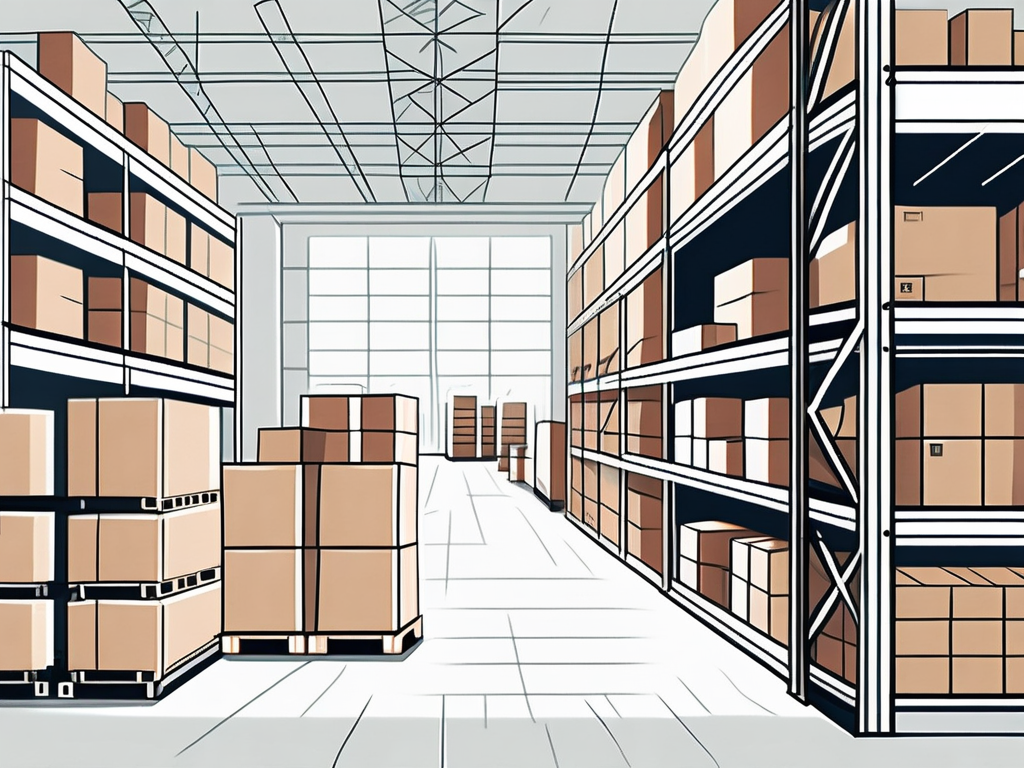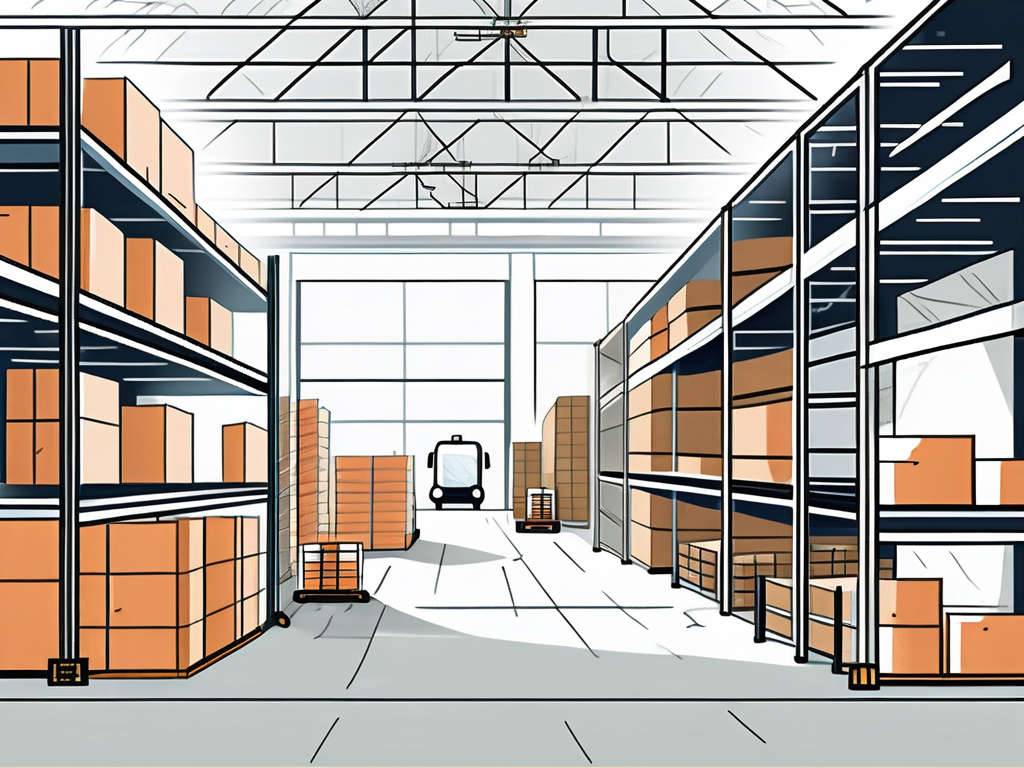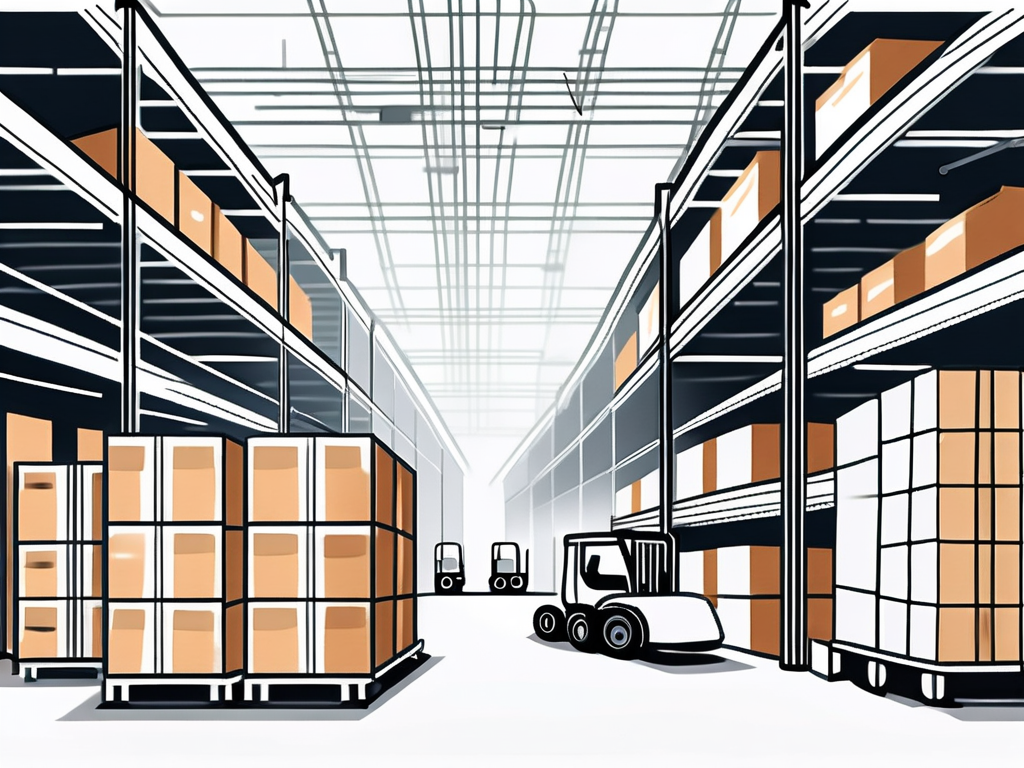
In today’s competitive business landscape, warehouse efficiency plays a crucial role in determining the success of a company. Efficient warehouse operations not only save costs but also improve customer satisfaction by enabling fast and accurate order fulfillment. In this comprehensive guide, we will explore the various strategies, technologies, and training methods that can help organizations optimize their warehouse efficiency and maximize productivity.
Understanding Warehouse Efficiency
Before diving into the strategies for improving warehouse efficiency, it is essential to understand the importance and key components of warehouse efficiency.
Warehouses are the backbone of supply chain operations, serving as hubs for storing, managing, and distributing goods. Efficient warehouse management is crucial for meeting customer demands, reducing operational costs, and gaining a competitive edge in the market.
The Importance of Warehouse Efficiency
Warehouse efficiency directly impacts the overall supply chain performance. It ensures timely delivery of products, minimizes order errors, and reduces costs associated with inventory management. In addition, efficient warehouse operations contribute to better customer satisfaction and retention. Organizations that prioritize warehouse efficiency gain a competitive advantage in the market.
Moreover, in today’s fast-paced business environment, where same-day deliveries and just-in-time inventory are becoming the norm, warehouse efficiency plays a pivotal role in meeting these evolving customer expectations.
Key Components of Warehouse Efficiency
There are several key components that contribute to efficient warehouse operations.
- Optimized Warehouse Layout: A well-planned warehouse layout reduces travel time and improves inventory handling processes.
- Streamlined Warehouse Processes: Efficient processes such as order picking, packing, and shipping help minimize errors and maximize productivity.
- Accurate Inventory Management: Implementing inventory control systems and regular audits ensure accurate stock levels and minimize wastage.
- Effective Staff Training: Properly trained warehouse staff can perform tasks more efficiently and contribute to smooth operations.
Furthermore, embracing technology such as warehouse management systems (WMS) and automation tools can significantly enhance warehouse efficiency by providing real-time data insights, optimizing inventory control, and increasing operational speed and accuracy.
Strategies for Improving Warehouse Efficiency
Now that we have a solid understanding of warehouse efficiency, let’s explore some effective strategies that can be implemented to optimize warehouse operations.
Improving warehouse efficiency is a multifaceted endeavor that requires a comprehensive approach. In addition to the strategies mentioned, it is crucial for organizations to focus on workforce training and development. Well-trained employees who are equipped with the necessary skills and knowledge can contribute significantly to operational efficiency. Providing ongoing training programs and performance feedback can help employees stay motivated and engaged, leading to higher productivity levels.
Implementing Lean Principles
Adopting lean principles such as Just-In-Time (JIT) inventory management and continuous improvement can significantly improve warehouse efficiency. By eliminating waste, reducing excess inventory, and focusing on value-added activities, organizations can streamline their operations and maximize productivity.
Optimizing Warehouse Layout
The layout of a warehouse plays a crucial role in minimizing travel time and optimizing space utilization. By analyzing product flow patterns, implementing efficient storage systems, and utilizing automation technologies, organizations can create a layout that enables faster and more accurate order fulfillment.
Streamlining Warehouse Processes
Efficient warehouse processes, such as order picking, packing, and shipping, are essential for improving overall efficiency. Implementing barcode scanning systems, batch picking strategies, and automated sorting technologies can minimize errors and reduce processing time, ultimately enhancing productivity.
Furthermore, establishing key performance indicators (KPIs) and regularly monitoring and analyzing operational data can provide valuable insights into areas that require improvement. By leveraging data analytics and performance metrics, organizations can identify bottlenecks, inefficiencies, and opportunities for enhancement, allowing for informed decision-making and continuous optimization.
Technology and Warehouse Efficiency
Advancements in technology have revolutionized warehouse operations, offering immense opportunities for improving efficiency.
In addition to the aforementioned technological advancements, another key area where technology has made a significant impact on warehouse efficiency is in the realm of data analytics. By harnessing the power of big data and analytics tools, warehouses can gain valuable insights into their operations, customer behavior, and market trends. This data-driven approach enables warehouses to forecast demand more accurately, optimize inventory levels, and identify areas for process improvement.
The Role of Warehouse Management Systems
Warehouse Management Systems (WMS) provide end-to-end visibility and control over warehouse operations. These systems automate inventory tracking, optimize order fulfillment, and streamline communication between different departments, enabling real-time decision-making and enhancing efficiency.
Moreover, modern WMS often come equipped with advanced features such as machine learning algorithms and predictive analytics, allowing warehouses to proactively address issues before they escalate. By leveraging these capabilities, warehouses can improve forecasting accuracy, enhance resource utilization, and ultimately boost overall operational efficiency.
Automation in the Warehouse
Utilizing automation technologies such as conveyors, robotic systems, and automatic guided vehicles (AGVs) can significantly enhance warehouse efficiency. Automation reduces manual labor, minimizes errors, and enables high-speed and accurate order processing.
Furthermore, the integration of artificial intelligence (AI) and machine learning algorithms into warehouse automation systems has opened up new possibilities for optimizing warehouse processes. AI-powered systems can analyze vast amounts of data in real-time, identify patterns, and make intelligent decisions to streamline operations. This level of automation not only improves efficiency but also enhances adaptability and responsiveness to changing market demands.
The Impact of IoT on Warehouse Efficiency
The Internet of Things (IoT) has emerged as a game-changing technology for warehouse operations. By connecting various devices and sensors, organizations can gather real-time data on inventory levels, equipment performance, and environmental conditions. This data-driven approach allows proactive decision-making, optimized resource allocation, and improved overall warehouse efficiency.
Moreover, the integration of IoT with other technologies such as blockchain has the potential to revolutionize supply chain transparency and traceability. By leveraging blockchain technology to create secure, immutable records of transactions and movements within the supply chain, warehouses can enhance trust, reduce disputes, and ensure compliance with regulatory requirements. This seamless integration of IoT and blockchain not only improves operational efficiency but also strengthens the integrity of the entire supply chain ecosystem.
Training and Warehouse Efficiency
Investing in staff training is a crucial aspect of improving warehouse efficiency. A well-trained workforce not only enhances productivity but also contributes to a safer work environment and better customer service.
Warehouse efficiency can be further optimized by implementing continuous improvement initiatives and fostering a culture of learning and development within the organization. By encouraging employees to pursue ongoing education and training opportunities, companies can stay ahead of industry trends and technological advancements, ultimately leading to a more competitive and agile operation.
The Importance of Staff Training
Well-trained warehouse staff are more competent, confident, and efficient in their roles. Training should cover areas such as equipment operation, safety protocols, inventory management, and process optimization to empower employees with the necessary skills and knowledge to contribute effectively towards warehouse efficiency. Regular training sessions not only enhance individual performance but also promote a sense of accountability and ownership among employees, fostering a culture of continuous improvement.
Effective Training Methods for Warehouse Staff
Organizations can utilize various training methods to ensure effective knowledge transfer and skill development. Tailoring training programs to meet the specific needs of employees can lead to higher engagement and retention rates, ultimately resulting in a more skilled and motivated workforce.
- Hands-on Training: Practical training sessions with experienced trainers help employees gain confidence and proficiency in specific tasks. By simulating real-world scenarios, hands-on training allows staff to apply theoretical knowledge in a practical setting, reinforcing learning outcomes.
- E-Learning Modules: Online training modules can provide flexibility and allow employees to learn at their own pace. These modules can cover various topics such as safety procedures, equipment operation, and process optimization. E-learning also enables organizations to track employee progress and assess learning effectiveness through interactive quizzes and assessments.
- Group Workshops: Collaborative workshops can facilitate knowledge sharing, problem-solving, and idea generation among warehouse staff. These sessions can focus on improving teamwork and identifying process bottlenecks. By encouraging open communication and collaboration, group workshops foster a sense of camaraderie and collective responsibility within the team.
Measuring Warehouse Efficiency
Regularly measuring and evaluating warehouse efficiency is essential for identifying areas of improvement and implementing necessary changes. It allows organizations to optimize their operations, reduce costs, and deliver exceptional customer experiences.
Efficiency in a warehouse is not just about speed; it encompasses various factors that contribute to the overall effectiveness of the facility. By focusing on key performance indicators (KPIs), organizations can gain valuable insights into their warehouse operations and make data-driven decisions.
Key Performance Indicators for Warehouse Efficiency
Organizations can utilize specific key performance indicators (KPIs) to assess warehouse efficiency:
- Order Fulfillment Rate: The percentage of customer orders fulfilled accurately and on time. This KPI reflects the warehouse’s ability to meet customer demands efficiently and maintain high service levels.
- Inventory Accuracy: The level of inventory accuracy achieved, minimizing stock-outs and excess inventory. Accurate inventory management ensures that the right products are available when needed, avoiding delays and customer dissatisfaction.
- Pick and Pack Efficiency: The time taken to pick and pack orders accurately, reflecting the efficiency of warehouse processes. This KPI measures the speed and accuracy of order fulfillment, highlighting areas for improvement such as optimizing picking routes and utilizing automation technologies.
- Inventory Turnover Ratio: The number of times inventory is sold and replaced within a specific period, indicating efficient inventory management. A high turnover ratio indicates that inventory is moving quickly, minimizing holding costs and reducing the risk of obsolete stock.
By regularly monitoring these KPIs, organizations can identify trends, benchmark their performance against industry standards, and implement targeted improvements to enhance warehouse efficiency.
Regular Auditing and Continuous Improvement
Auditing warehouse processes, procedures, and systems on a regular basis helps identify bottlenecks and areas for improvement. It allows organizations to evaluate the effectiveness of their current practices and make necessary adjustments to optimize efficiency.
Furthermore, fostering a culture of continuous improvement and feedback is crucial for driving innovation and staying ahead in today’s dynamic business environment. By encouraging employees to provide suggestions and ideas, organizations can tap into their collective knowledge and experience to identify innovative solutions and streamline warehouse operations.
In conclusion, improving warehouse efficiency is a multi-dimensional endeavor that requires a combination of strategic planning, technology adoption, and employee training. By understanding the importance of warehouse efficiency and implementing the strategies outlined in this comprehensive guide, organizations can enhance their operational capabilities, reduce costs, and deliver exceptional customer experiences.



